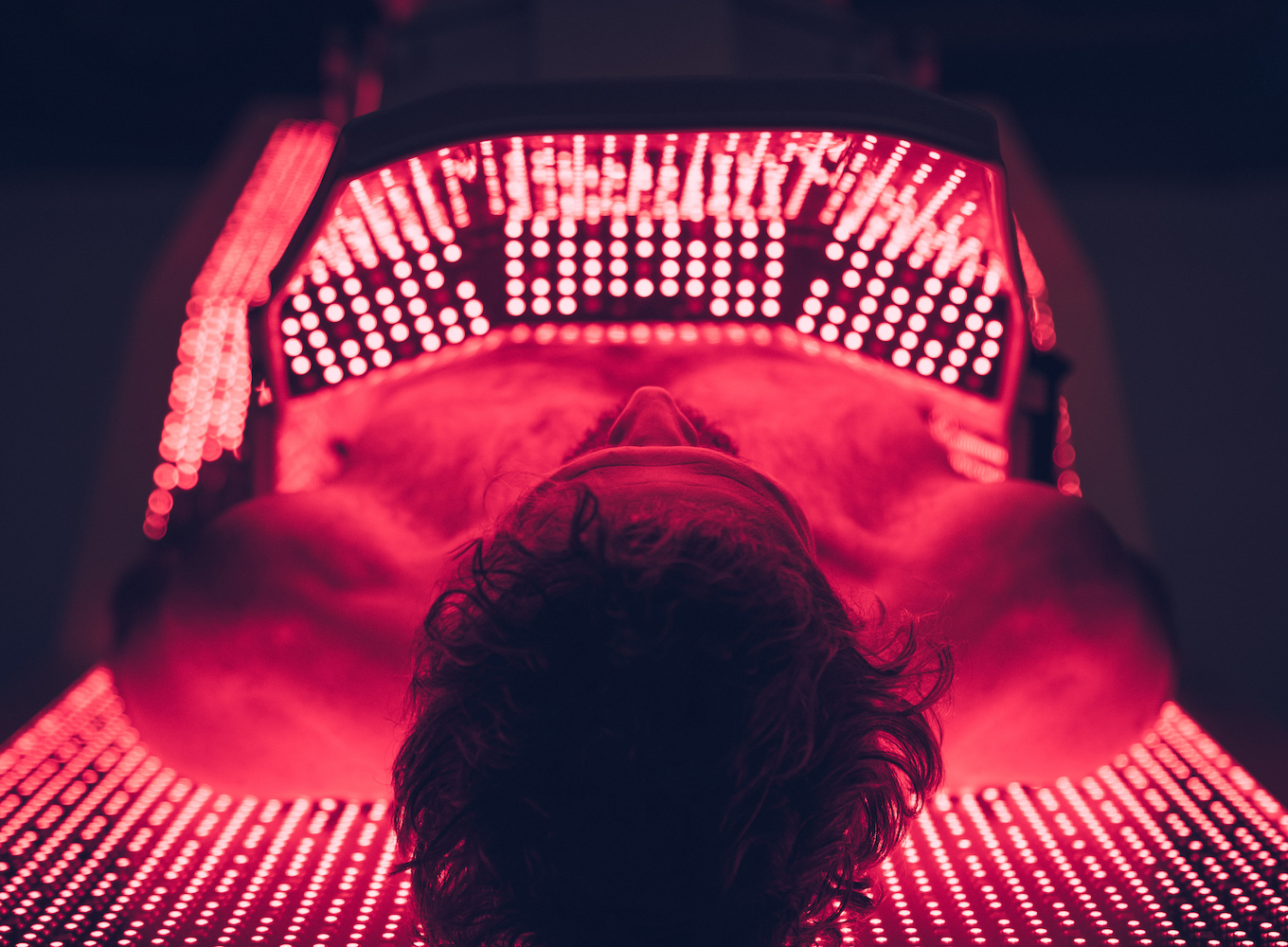How Much Red Light is Too Much?

On a biological level, red light therapy works in much the same way as exercise. When you work out, you put temporary stress on the body, and the body responds by repairing itself and becoming stronger and healthier. Red and near-infrared light does essentially the same thing, activating many of the same cell defense systems that exercise does by creating free radicals, which promotes a very low-level inflammatory response.
But too much exercise can diminish the benefits and even cause negative consequences like extreme fatigue or injury. So, is there also such thing as too much red light? The long answer involves a number of variables and mathematical equations, but the short answer is, yes. You need to have enough exposure to achieve particular results, but too much exposure can actually diminish the benefits. While the chances of “overdoing it” and the potential consequences of doing so are minimal, it’s still good for operators and clients to understand that more isn’t necessarily better.
“There is something called a ‘biphasic dose response’ whereby too much can actually result in a lesser benefit rather than more. So don’t assume that ‘if a little is good, a lot must be better.’ All you’re doing is decreasing the benefit by doing more than the recommended doses,” writes best-selling author Ari Whitten in his book The Ultimate Guide To Red Light Therapy: How to Use Red and Near-Infrared Light Therapy for Anti-Aging, Fat Loss, Muscle Gain, Performance, and Brain Optimization.
As Whitten is careful to note, the likelihood of excess red light exposure and and risks of potentially doing so are relatively minimal, even when compared with the risk of overexercising. This is why so many devices are simply FDA “Registered” and not “Approved” by the FDA. The FDA has determined that it is not necessary to approve many types of “general wellness” devices primarily because of their low-risk status. There are no known potentially detrimental effects from many of these non-UV devices, as recognized by the U.S. Food & Drug Administration.
“I even know some people who have used red light therapy for decades and believe that it’s very hard to realistically overdo it in a way that negates the benefits,” Whitten writes. “Generally, if you overdo it slightly, you won’t likely notice any negative effects whatsoever. And many people won’t even notice negative effects if they overdo it by a lot. But if you massively overdo the dose, it’s common to feel some fatigue or get a slight headache. That’s typically as bad as it gets for most people. Basically there is very limited potential for side effects with overdosing, particularly when compared with exercise […].”
Getting too much isn’t even a consideration with many red light devices used in the tanning market, as users will likely never even get enough to achieve noticeable results. There’s simply not enough output, or the lights are too far away from the skin. Remember, no matter how powerful a red light device is, the light diminishes quickly with distance. But the high-output SmartSun Therapy SST28 is optimally designed to provide the most efficient red and near-infrared light exposure, so the session time is limited to 10 minutes. With the SST28’s 28,433 total LED light diodes and its functional design that minimizes the distance between the lights and the user, not getting enough is never going to be a problem. In fact, when you factor in the true measurement of light output that actually reaches the user’s skin, the SST28 is as much as 10x higher than other devices.
The amount of red light exposure needed will also vary depending on the results the user is trying to achieve. For instance, skin care benefits will be observed with much less exposure than reduced inflammation and joint pain. That’s why users of many types of red light equipment will experience skin care benefits but nothing else. While the actual “dose” of red light exposure can be calculated using the wattage of lights, treatment area (how much skin is exposed to the light), and time of exposure, that’s hardly necessary for users or operators to understand. SmartSun Therapy is carefully engineered to provide the optimal amount of exposure in a 10-minute session, and while users should experience a variety of results from a few sessions per week, there’s no evidence to suggest that clients shouldn’t use SmartSun as often as daily if their body continues to respond positively.
“Ideal frequency of use is likely between 3-7x/week (or up to once per day),” Whitten writes.
“There are studies which have used more and less than this, however, based on my experience working with hundreds of people, I believe between 3 to 7 times per week is optimal.”
Because the risks of overexposure are so low, it’s largely up to the user to gauge how they feel and adjust their protocol accordingly. But once they start experiencing the benefits of SmartSun Therapy, chances are they’re only going to keep wanting more.
